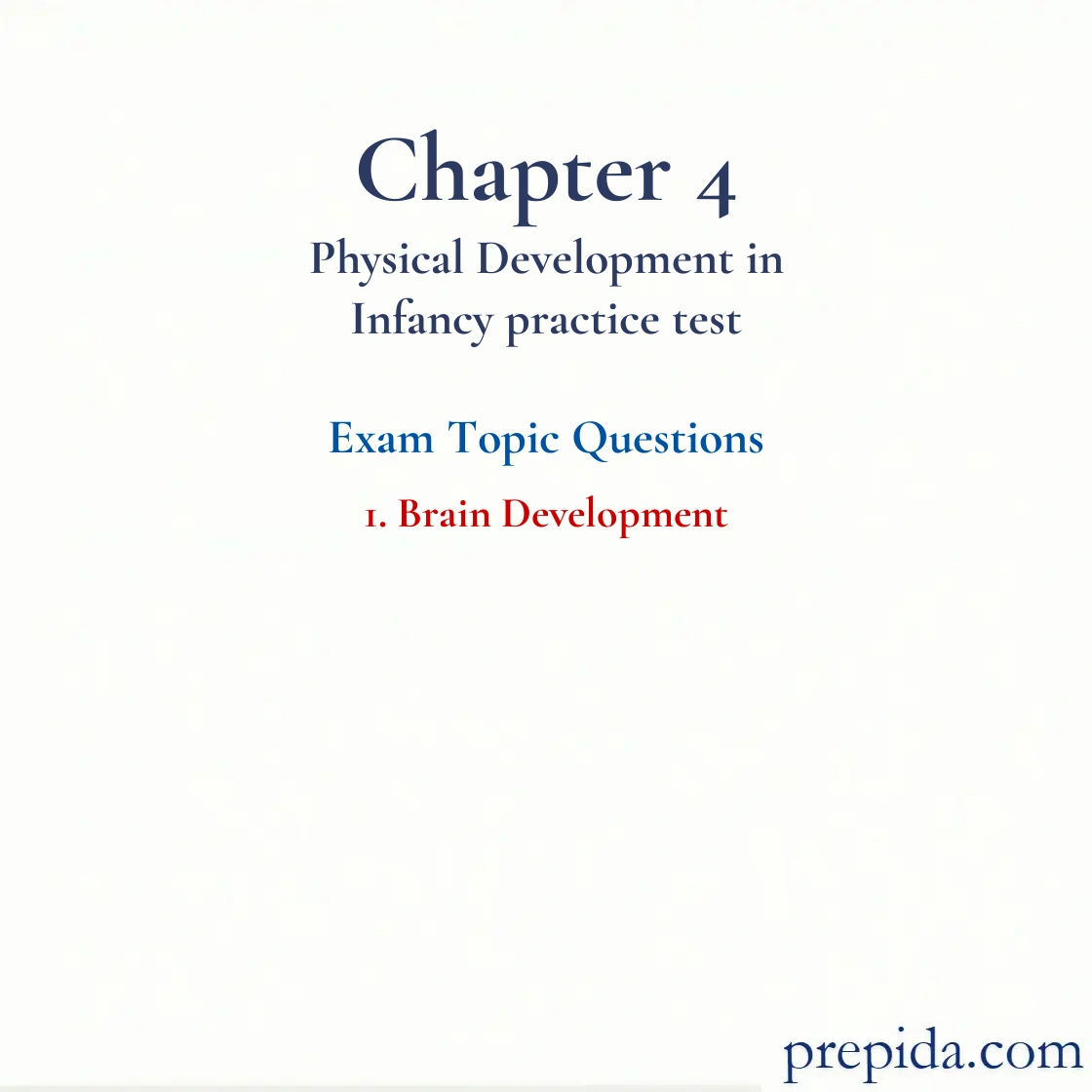
Which of the following statements is true about brain development?
- The brain grows exponentially from conception to birth, causing the brain to be completely developed at birth.
- The process of brain development continues through the first year after birth and then stops.
- Extensive brain development continues after birth, through infancy and later.
- Brain development continues after birth only among premature babies.
According to the neuroconstructivist view of brain development, which of the following is true of the plasticity of the brain?
- The plasticity of the brain is context dependent.
- The plasticity of the brain is independent of experiences.
- Interactions between experience and gene expression play a minor role in the plasticity of the brain.
- A child's cognitive development is weakly linked to the plasticity of the brain.
Neuroconstructivist View: A belief that biological processes and environmental conditions influence the brain’s development; the brain has plasticity and is context-dependent; and development of the brain and cognitive development are closely linked.
According to the neuroconstructivist view of brain development, ________.
- biological processes and environmental conditions influence the brain's development
- the brain does not have plasticity and is therefore independent of context
- a child's cognitive development is weakly linked to the development of the brain
- our genes determine how our brains are wired
Biological Processes: Changes in an individual’s physical nature.
According to neuroscientists, which of the following is true of how the brain is wired or rewired?
- Repeated experience is what wires the brain or rewires it.
- Genes solely determine how the brain is wired or rewired.
- Environmental conditions solely determine how the brain is wired or rewired.
- The wiring of the brain remains constant as its plasticity is dictated by heredity.
Neuroconstructivist View: A belief that biological processes and environmental conditions influence the brain’s development; the brain has plasticity and is context-dependent; and development of the brain and cognitive development are closely linked.
Fourteen-year-old Michael Rehbein had the left hemisphere of his brain removed to end uncontrollable seizures. His right hemisphere gradually began to reorganize and take over functions that normally occurred in the brain's left hemisphere. This case study is cited in the chapter in order to demonstrate that
- the brain is both flexible and resilient.
- myelination varies in different areas of the brain.
- the effects of deprived environments on the brain are irreversible.
- the brain can adapt and function only when whole.
Case Study: An in-depth look at a single individual.
When do the hemispheres of the cerebral cortex begin to specialize?
- before birth
- at birth
- at seven days of age
- around the first birthday
Afterbirth: The third stage of birth, when the placenta, umbilical cord, and other membranes are detached and expelled.
Similar to the epigenetic view, the ________ view emphasizes the importance of interactions between experience and gene expression in the brain's development.
- neuroconstructivist
- dynamic systems
- genetic
- ecological
Neuroconstructivist View: A belief that biological processes and environmental conditions influence the brain’s development; the brain has plasticity and is context-dependent; and development of the brain and cognitive development are closely linked.
Which of the following statements is true about the specialization of function in a hemisphere of the brain?
- Complex thinking is mostly carried out by the right hemisphere, while the left hemisphere typically deals with motor control.
- Logical thinkers are usually "left-brained."
- Creative thinkers are usually "right-brained."
- Complex thinking in normal people is the outcome of communication between both hemispheres of the brain.
Lateralization: Specialization of function in one hemisphere of the cerebral cortex or the other.
Your ability to process language in the left hemisphere of the brain and spatial thinking in the right hemisphere of the brain is called
- linearity.
- mastery.
- lateralization.
- learning.
Lateralization: Specialization of function in one hemisphere of the cerebral cortex or the other.
Which of the following statements is true about the involvement of the left and right hemispheres of the brain in performing different functions?
- Most neuroscientists believe that complex brain activity involves only one particular hemisphere.
- Logical thinkers are primarily 'right-brained' because of the excessive involvement of the right hemisphere.
- Humor and use of metaphors usually depend on activity in the right hemisphere.
- Excessive involvement of the left hemisphere results in creative thinking.
Lateralization: Specialization of function in one hemisphere of the cerebral cortex or the other.
A fall from the changing table resulted in damage to the temporal lobe of Emily's brain. Her doctor told her parents that this would most likely affect her
- memory.
- taste.
- vision.
- voluntary movement.
Memory: A central feature of cognitive development, pertaining to all situations in which an individual retains information over time.
While scooting on the floor, baby Giovanni fell down the stairs. If he can no longer see, it is likely that the ________ lobe of his brain was damaged.
- frontal
- parietal
- occipital
- temporal
One day when baby Mark was crawling around, he fell down the stairs. After the doctor examined him, Mark's parents learned that he had damaged the parietal lobe of the brain. Mark's parents were told to expect that he would have difficulty with
- registering spatial locations.
- processing auditory information.
- vision.
- initiating movement.